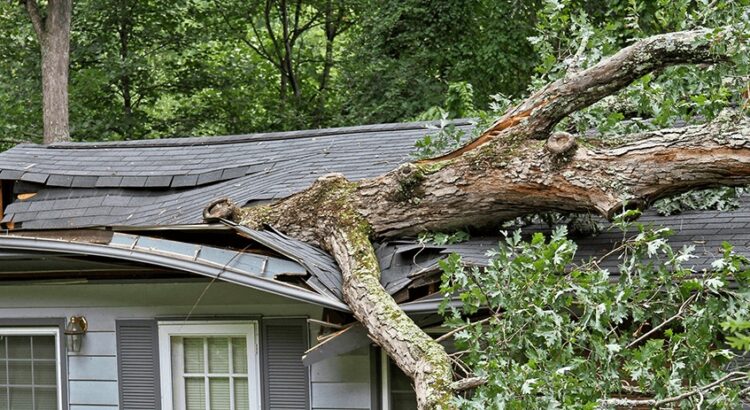Trees add beauty, shade, and character to any property, enhancing the aesthetic appeal and offering benefits such as improved air quality and energy conservation. However, there are times when tree removal becomes necessary to prevent significant damage to structures, utilities, and landscapes. While removing a tree may seem like a drastic step, it can be a crucial measure to ensure the safety and longevity of your property. This article explores how tree removal can help prevent property damage and safeguard your home or business.
1. Preventing Damage to Structures
One of the primary reasons for tree removal is to prevent potential damage to structures on your property. Over time, trees can grow in ways that pose serious risks to nearby buildings, such as your home, garage, or fence. There are several ways that tree growth can lead to structural damage:
Roots and Foundation Damage: The roots of trees naturally spread out in search of water and nutrients. When a tree is planted too close to a building or structure, its roots can eventually grow underneath the foundation. As these roots expand, they can exert pressure on the foundation, causing cracks or even shifting the structure. This can lead to costly repairs and long-term stability concerns. In some cases, the foundation may be compromised to the point where the property becomes uninhabitable. Removing the tree before the roots cause significant damage can save a lot of time, money, and stress.
Overhanging Branches: Trees with branches that extend over a home or building pose a direct risk to the roof and walls. Strong winds, storms, or heavy snow can cause these branches to break or fall, resulting in damage to the roof, windows, or exterior walls. In extreme cases, large branches or entire limbs can crash through windows or even puncture the roof. Regular tree maintenance, including trimming, can help prevent this risk, but in some cases, removal of the tree entirely is the safest and most effective option.
2. Avoiding Electrical Hazards
Trees that grow near power lines or electrical cables represent a significant safety hazard. When branches or tree limbs come into contact with power lines, they can cause electrical outages, fires, and even electrocution. Additionally, heavy winds or storms can cause these trees to fall, potentially causing widespread damage to the electrical grid or power supply.
By removing trees that are dangerously close to power lines or electrical sources, property owners can help reduce the risk of electrical accidents. Tree removal is particularly important in areas prone to storms, where strong winds can cause trees to fall unexpectedly. Utility companies often recommend removing or trimming trees near power lines to prevent service interruptions and dangerous conditions. In some areas, it may even be required by law to keep trees clear from power lines.
3. Reducing the Risk of Falling Trees
Another serious concern with large trees is the risk of them falling due to storms, disease, or other factors. While trees are naturally resilient and can withstand harsh weather, certain conditions can make them more vulnerable to falling:
Tree Disease and Rot: Trees that are diseased, decaying, or infested with pests are at higher risk of becoming unstable. Fungal infections, for instance, can weaken a tree’s internal structure, making it more likely to collapse under stress. In these situations, tree removal becomes essential to prevent a dangerous situation. Diseased or rotting trees can fall unexpectedly, especially during heavy storms or high winds, posing a risk to people, vehicles, and structures below.
Storm Damage: High winds, hail, and heavy rainfall can weaken a tree’s structural integrity, causing it to snap or uproot. Trees with compromised root systems or those located in areas with poor soil drainage are particularly susceptible to falling during storms. By proactively removing trees that are in danger of falling, property owners can reduce the risk of significant damage to their property. This is especially true for large, old trees with deep roots or shallow-rooted species that can easily be uprooted.
4. Preventing Soil Erosion
While trees are generally beneficial for soil retention, there are cases where the removal of a tree can help prevent soil erosion. Trees with shallow root systems or those situated on slopes can actually contribute to erosion when their roots no longer stabilize the soil. When these trees fall or are removed, the absence of their root system can leave the soil vulnerable to washing away, especially during heavy rains.
In these instances, tree removal can help prevent soil erosion by making way for proper erosion control measures, such as replanting with more suitable vegetation, adding retaining walls, or installing drainage systems. Addressing the underlying cause of erosion before it worsens can prevent long-term damage to your landscaping, pathways, and even the foundation of your home.
5. Preserving Landscaping and Gardens
In some cases, trees can overshadow or block the sunlight necessary for your landscaping or garden to thrive. Overgrown trees with dense canopies can prevent sunlight from reaching plants and flowers, stunting their growth and harming your landscaping efforts. Additionally, roots from large trees can extend into garden beds, competing with other plants for water and nutrients.
If a tree is causing issues with your garden or lawn, removal may be the best solution to ensure the health of your plants. Removing the tree opens up space for more sunlight and allows other vegetation to flourish, improving the overall aesthetic and vitality of your landscape.
6. Avoiding Damage to Paving and Driveways
Trees growing near paved areas such as driveways, sidewalks, or patios can cause significant damage over time. As tree roots grow, they may push up against the surface of paved areas, causing cracks and uneven surfaces. Not only can this damage the appearance of your property, but it can also create tripping hazards or make driving and walking more difficult.
By removing trees that are close to paving, you can prevent further damage to these surfaces. While minor cracks may be repairable, larger-scale damage from invasive tree roots can require costly resurfacing or even complete replacement of the pavement. In cases where a tree’s roots are already causing significant disruption, removal can help prevent additional issues.
7. Enhancing Property Safety
Tree removal can improve the overall safety of your property. Overgrown or poorly positioned trees can pose risks to the safety of your family, pets, or visitors. Large branches or unstable trees can fall at any time, especially during high winds, posing a significant risk of injury or property damage. Removing these trees ensures that your property is safer and less likely to be affected by accidents involving trees.
Additionally, clearing away trees that block sightlines, such as those near driveways or entrances, can improve visibility and reduce the risk of accidents. Well-maintained, safe outdoor spaces are essential for both homeowners and visitors.
8. The Importance of Professional Tree Removal
While some property owners may consider attempting to remove a tree themselves, professional tree removal services are essential for ensuring the job is done safely and effectively. Tree removal professionals are trained to assess the condition of the tree, the risks involved, and the best techniques for removing it without causing harm to nearby structures or landscaping. Hiring a certified arborist or tree removal service also ensures that the proper equipment and safety measures are used throughout the process, reducing the risk of accidents.
Final Considerations
Tree removal may seem like a difficult or unnecessary step, but when done correctly and for the right reasons, it can help prevent significant damage to your property. Whether it’s avoiding damage to structures, preventing electrical hazards, reducing the risk of falling trees, or improving the safety of your landscaping, removing a tree can offer many benefits in terms of property preservation and safety. By working with professional tree removal experts, you can ensure that the process is handled responsibly and effectively, ultimately protecting the value and integrity of your home or business.





